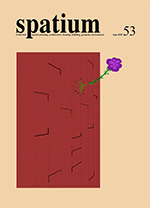Urban land use and the spatial targets of terrorist attacks in Maiduguri city, Northeast Nigeria
DOI:
https://doi.org/10.2298/SPAT250120007BKeywords:
land use, Maiduguri city, measures, terrorist attacks, vulnerabilitiesAbstract
This research investigated the relationship between urban land use and terrorist attacks in attack places of Maiduguri, Northeast Nigeria – a city significantly affected by insurgency and urban vulnerabilities. Analysing 402 terrorist incidents recorded between 2010 and 2020, the research identifies critical correlations between land uses and attack types. Results revealed that tertiary institutions, motor parks, and Jumaat mosques were the riskiest facilities for bomb attacks, increasing their likelihood by 265%, 205%, and 218%, respectively, due to their capacity to attract large crowds and influence routine activities. Markets and schools were found to be key predictors of armed assaults. At the same time, facilities such as public offices, hotels, and recreation areas demonstrated resilience to bomb attacks, reducing their likelihood by 63%, 90%, and 79%, respectively, due to their controlled access and security measures. Notably, certain land uses, including markets and IDP camps, exhibited no significant correlation with bomb attacks, contrary to expectations. These findings highlight the critical role of urban planning in mitigating vulnerabilities by strategically integrating high-risk and resilient land uses. The study emphasized the need for urban planners and policymakers to incorporate counterterrorism measures into land-use planning to foster safer and more resilient cities in conflict-prone regions.


